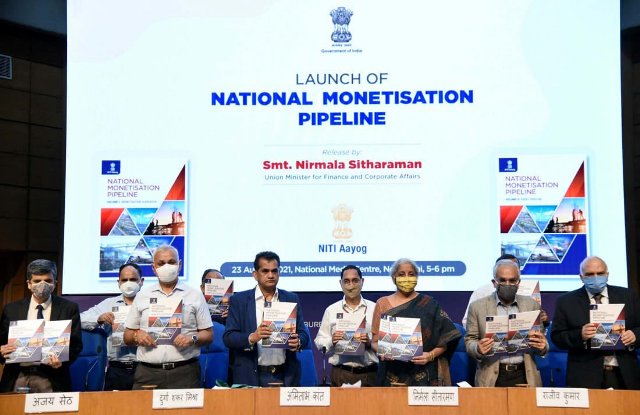Modi Government’s Big Asset Monetisation Plan; Know Details
The proposed sales are in accordance with Prime Minister Narendra Modi's strategic divestment policy, which calls for the government to remain in only a few key sectors while privatising the rest.
Insight Bureau: Finance Minister Nirmala Sitharaman on Monday unveiled an ambitious Rs 6 lakh crore National Monetisation Pipeline (NMP), which details the Government’s infrastructure assets that would be sold over the next four years.
The proposed sales are in accordance with Prime Minister Narendra Modi’s strategic divestment policy, which calls for the government to remain in only a few key sectors while privatising the rest.
Finance Minister Nirmala Sitharaman stated during the launch of the 6 lakh crore National Monetisation Pipeline that the Government will only monetize under-utilized assets and that ownership will stay with the Government.
Support Independent Journalism? Keep us live.
Nirmala Sitharaman emphasised that the National Monetisation Pipeline focuses on brownfield assets where investment is already been made and where assets are languishing, not completely monetised, or underutilised. By bringing in private investment, the brownfield assets will be monetized.
Here are the highlights of today’s press meet :-
- After a predetermined period of time, the private participants will be required to hand over their assets to the government. The revenue collected from the monetization process will be used to improve infrastructure.
- Over the next four years, 6 lakh crore in infra assets would be monetised across the rail, road, and power sectors, and “projects have been identified to monetise the assets,” according to NITI Aayog CEO Amitabh Kant.
- The entire exercise, according to the finance minister, “will generate greater value and unlock resources for the economy.”
- Mr Kant stated that the government plans to monetize assets worth 1.6 lakh crore from the roads sector, 1.5 lakh crore from the railway sector, and 79,000 crore from the power sector. Airports will bring in 20,800 crore, ports will bring in 13,000 crore, telecom will bring in 35,000 crore, stadiums will bring in 11,500 crore, and power transmission will bring in 45,200 crore.
- The majority of asset monetisation will be done through InvIT or public-private partnerships.
- According to Rajiv Kumar, Vice Chairman of the Niti Aayog, the government is committed to involving the private sector and private capital in infrastructure development.
- The National Monetisation Pipeline will include the ministries of roads, transport & highways, railways, power, pipeline & natural gas, civil aviation, shipping ports & waterways, telecommunications, food & public distribution, mining, coal, housing, and urban affairs, according to the Finance Ministry.
- Infrastructure has huge multiplier effects, according to Mr Kumar, and the monetisation pipeline is the next stage in mobilising private capital for infrastructure development.
- According to the Department of Investment and Public Asset Management’s website, asset monetisation is the process of generating new revenue streams by unlocking the value of underutilised and unused public assets.
- Nirmala Sitharaman initially mentioned a National Monetisation Pipeline in the Union Budget of 2021, claiming that the government was exploring for new initiatives to raise funds.


Comments are closed.